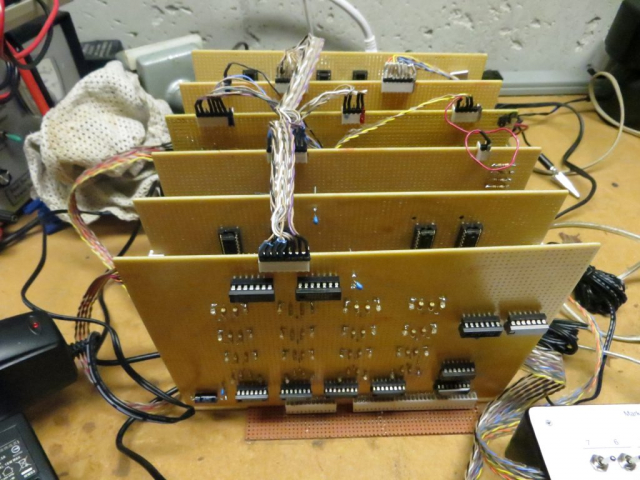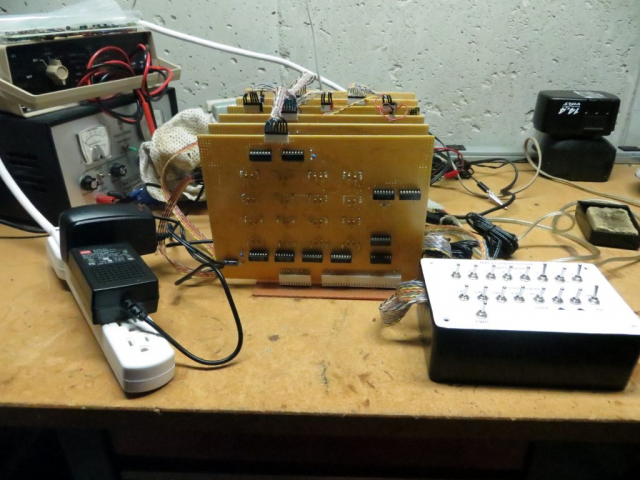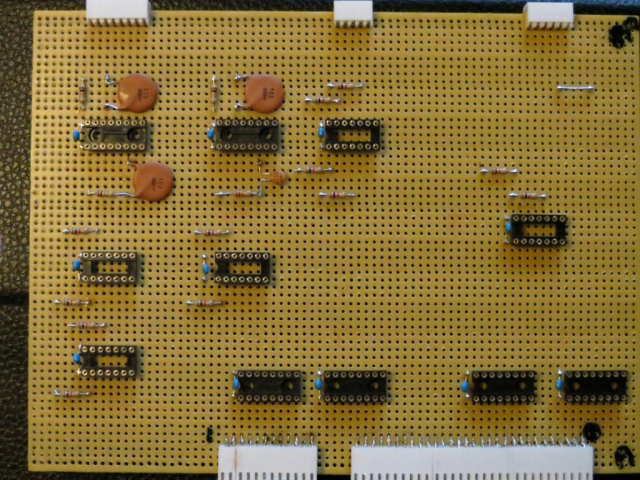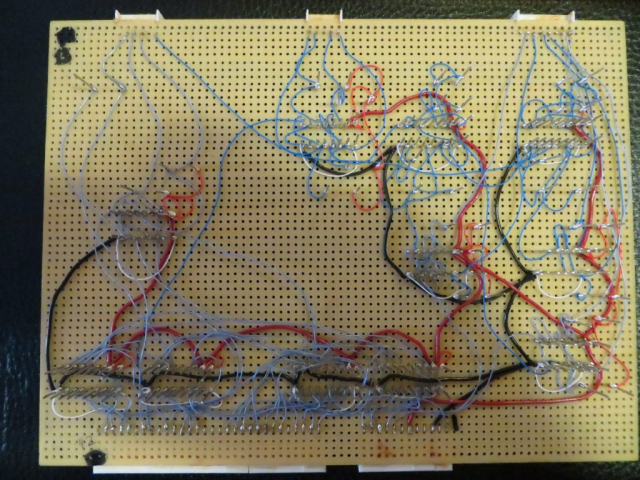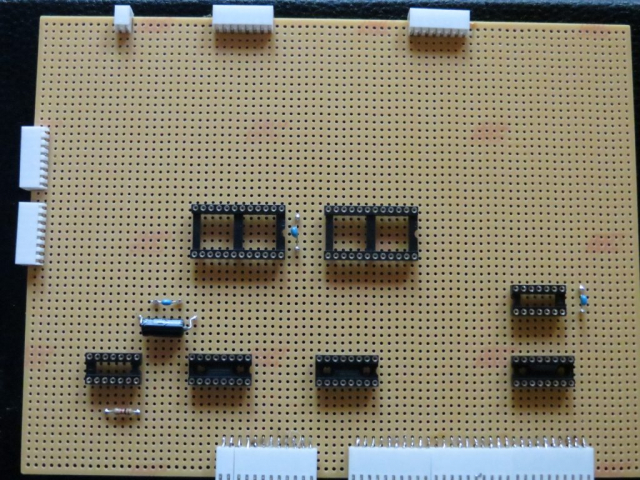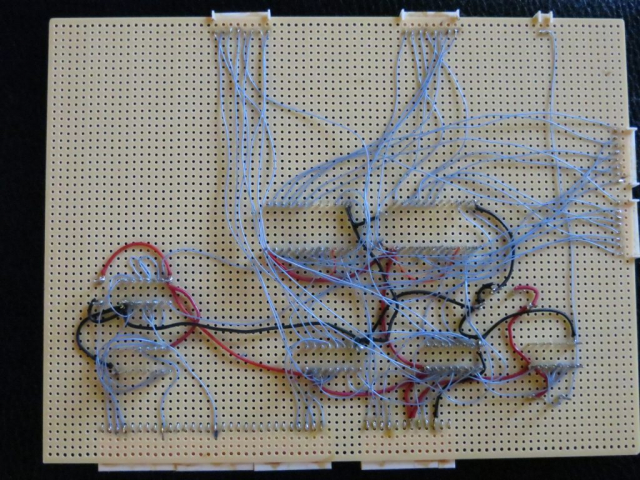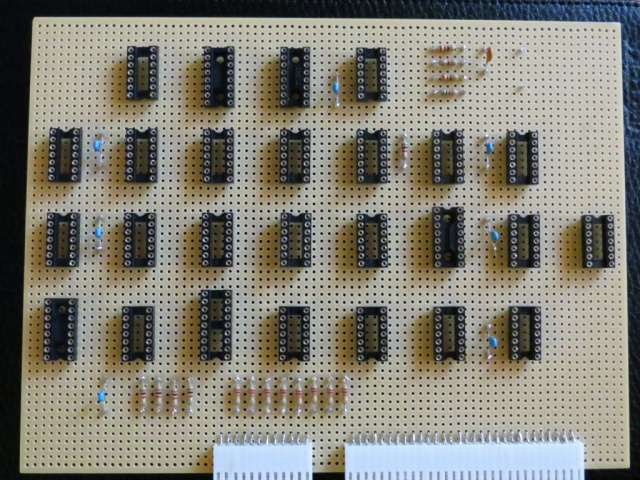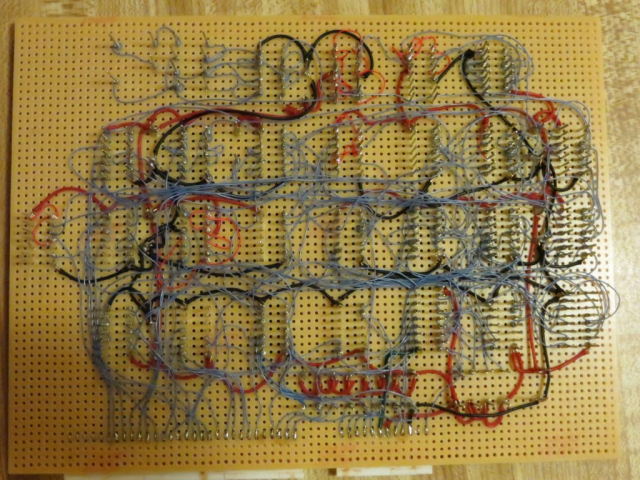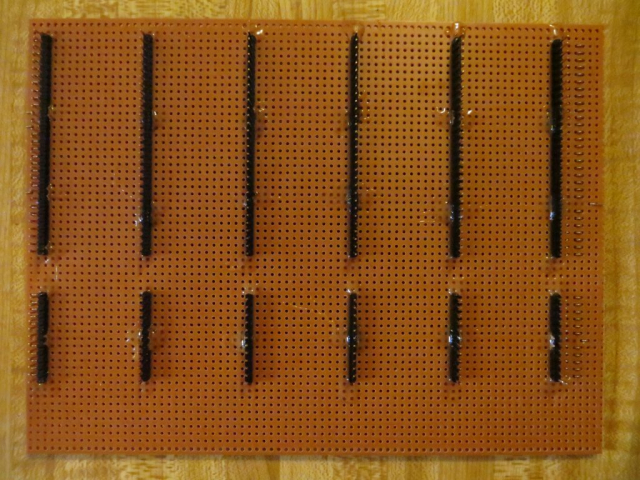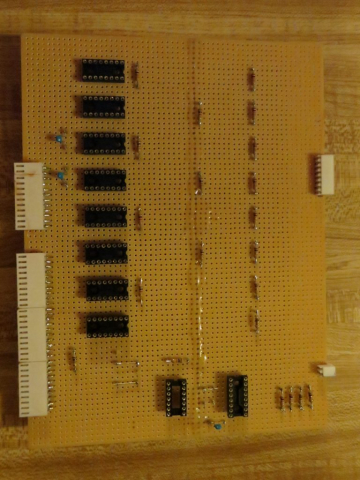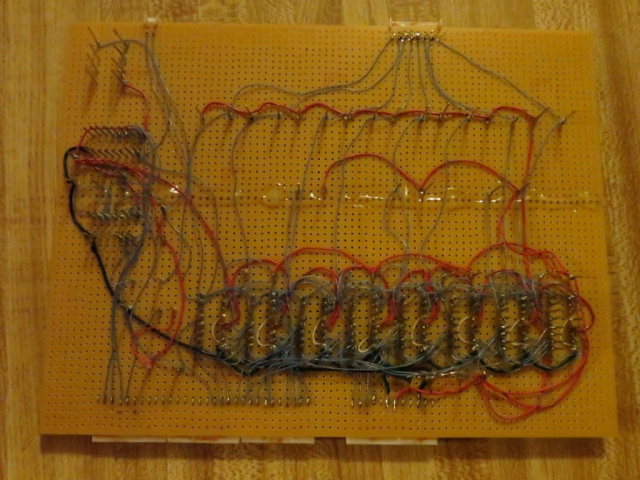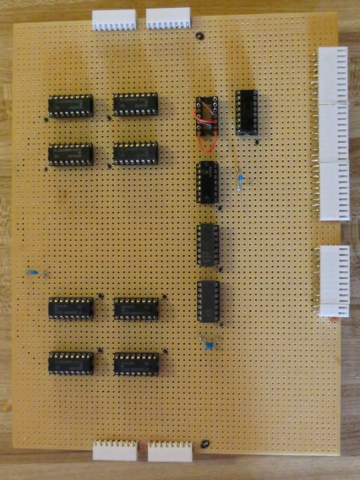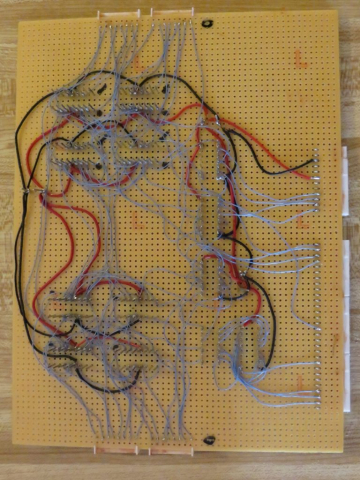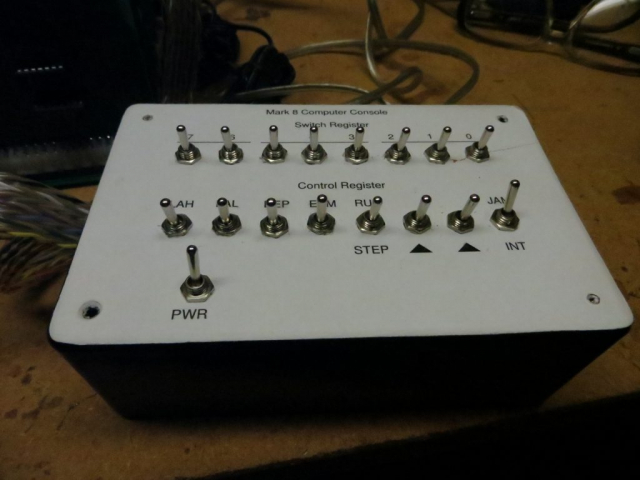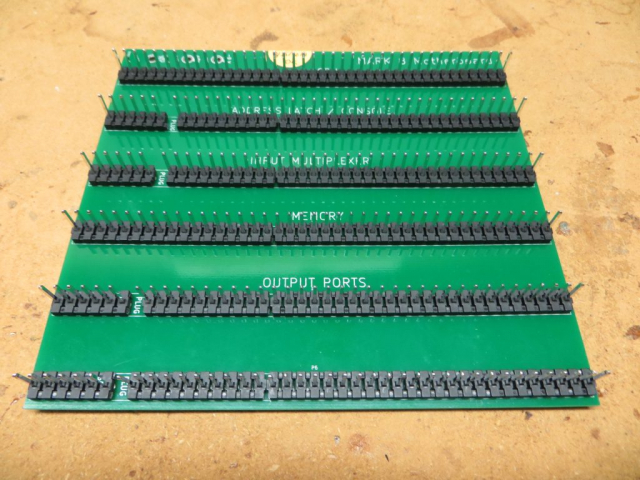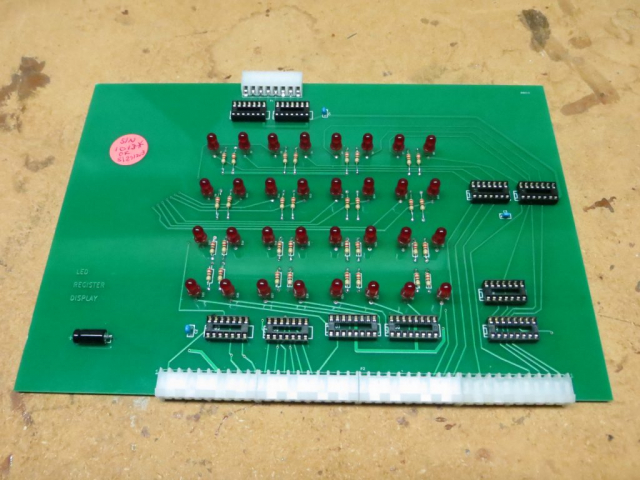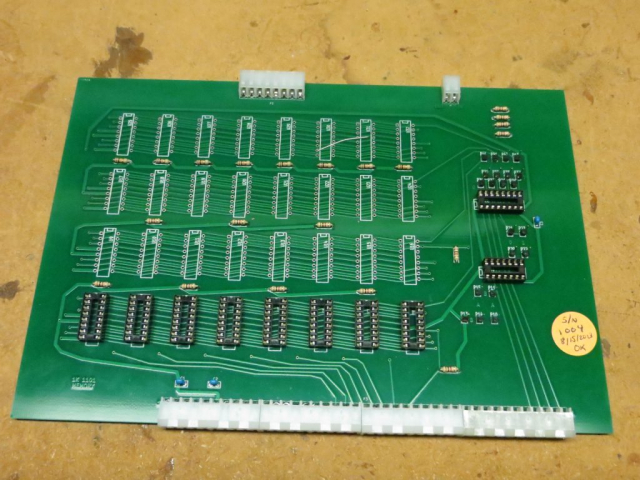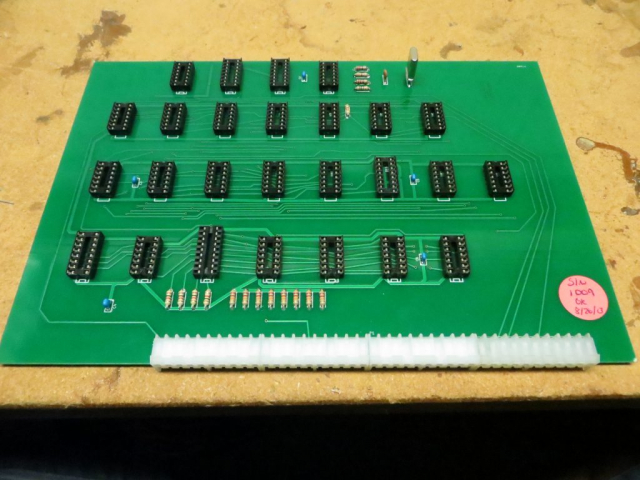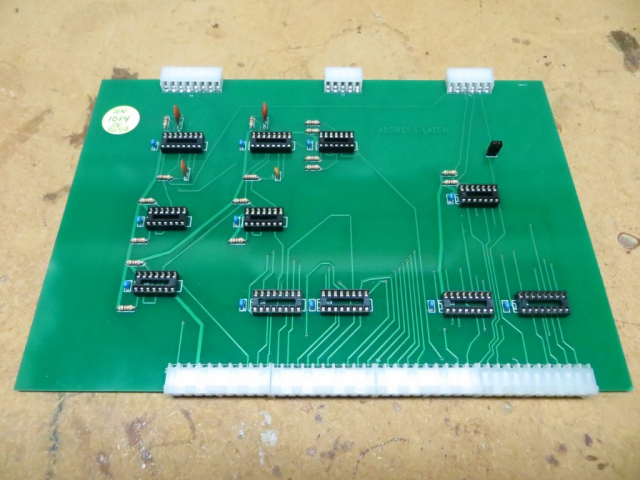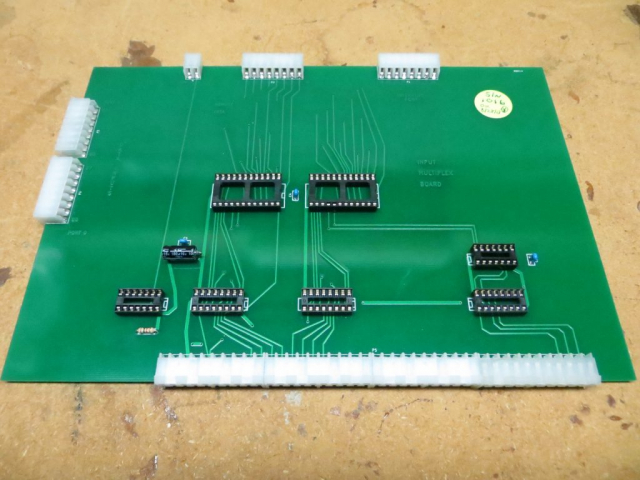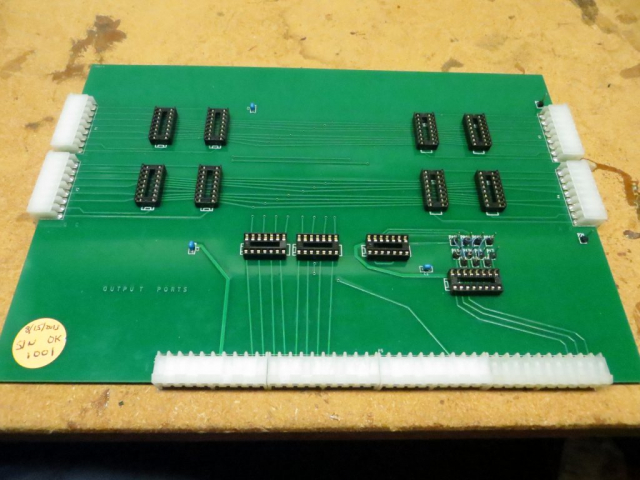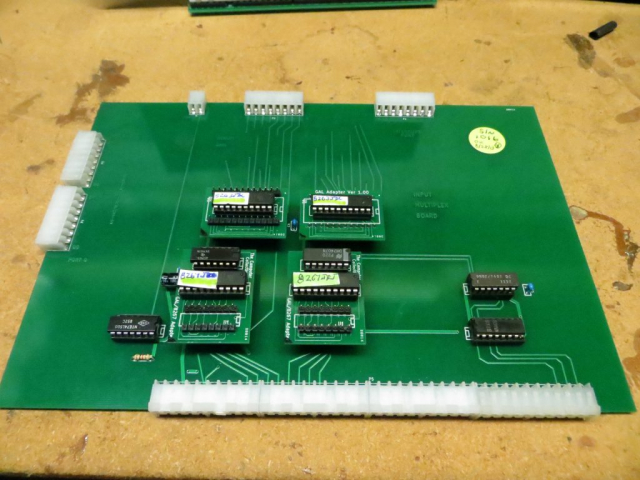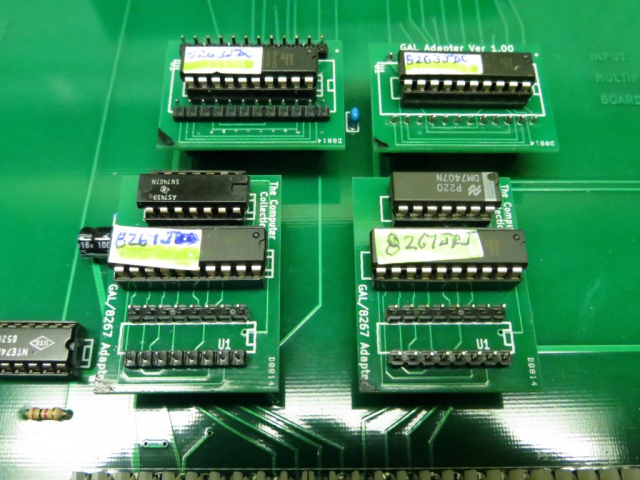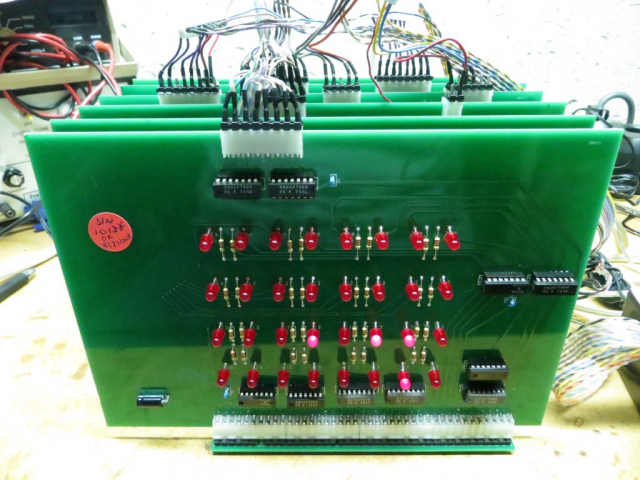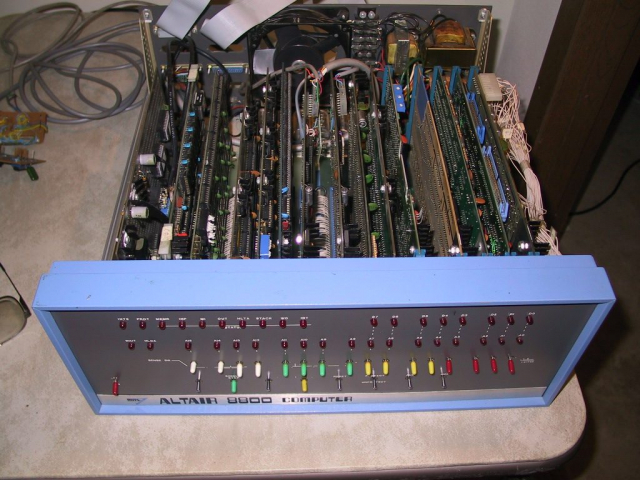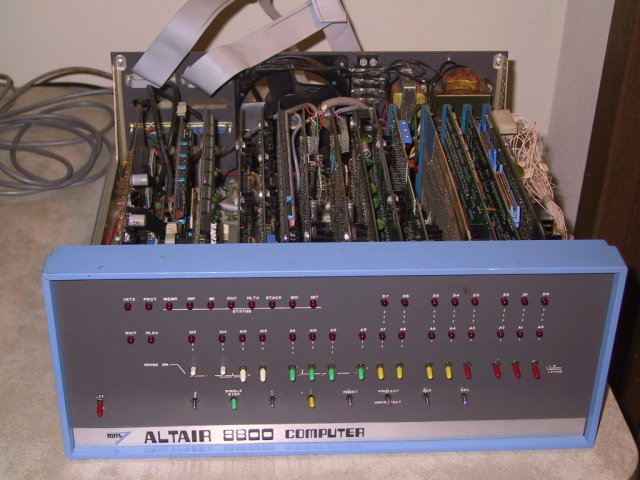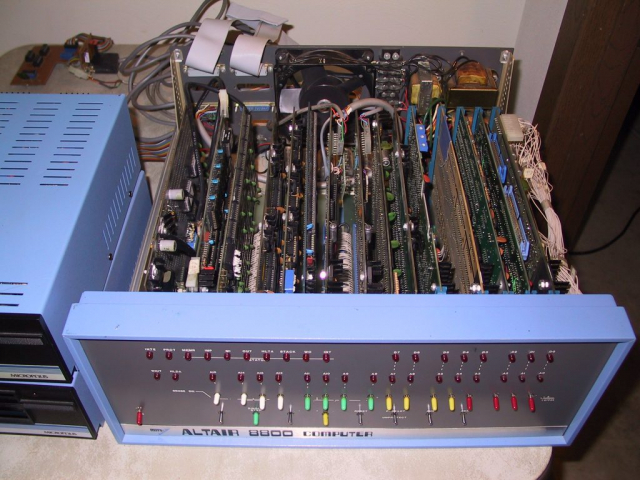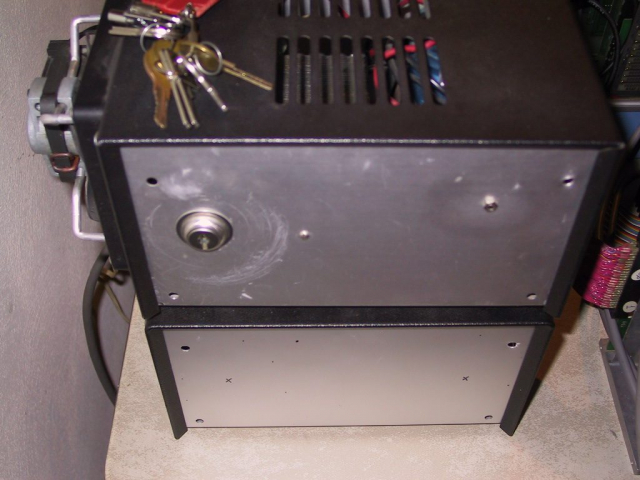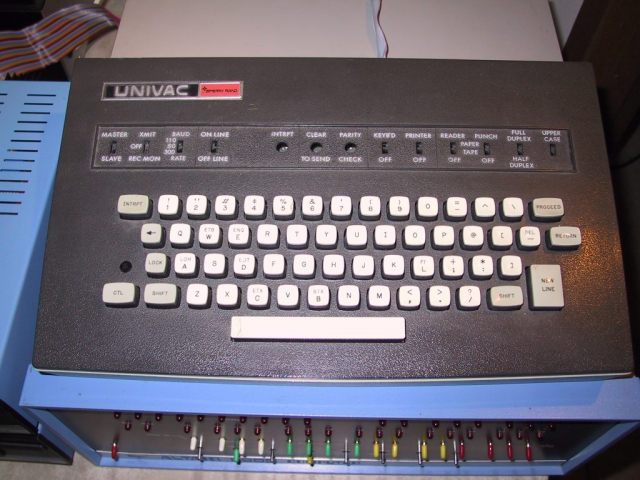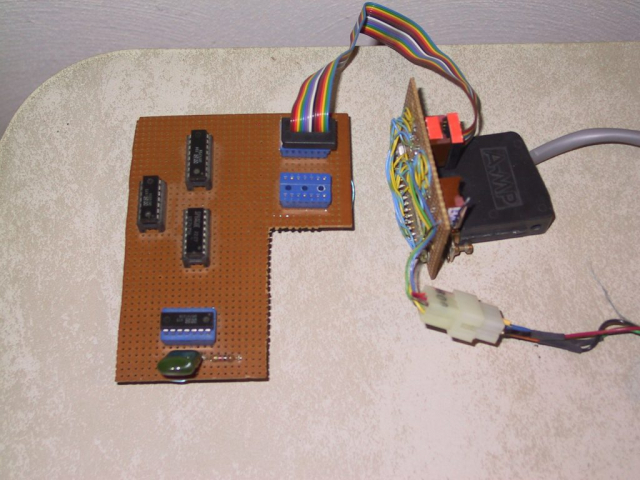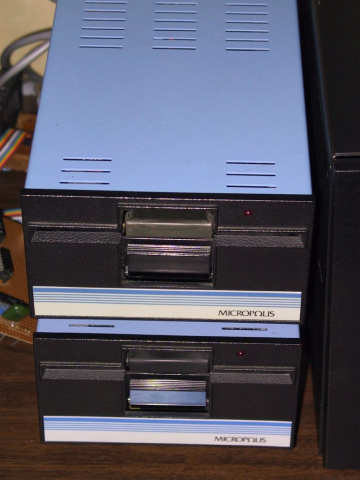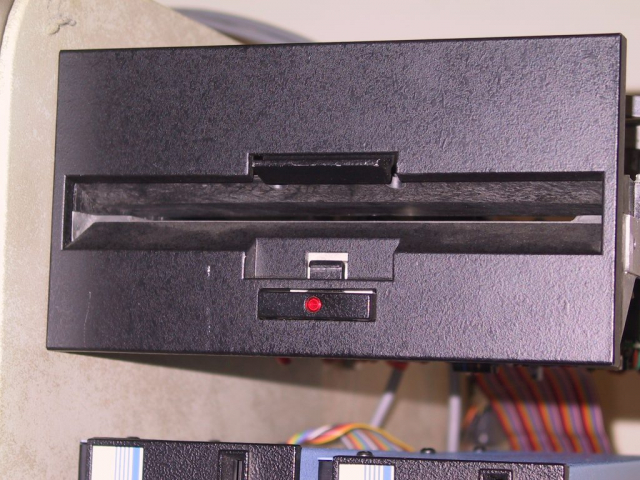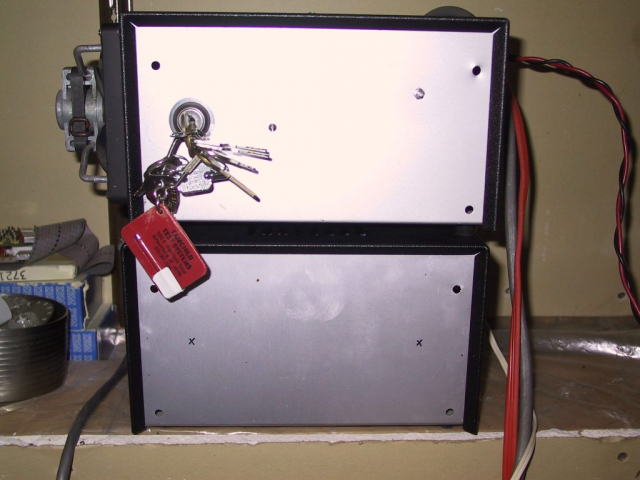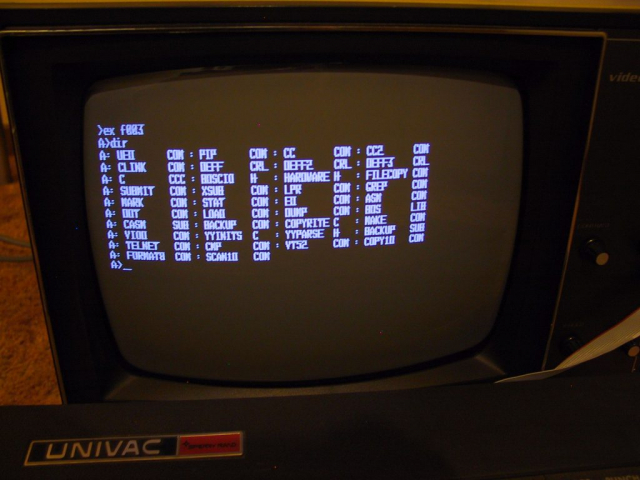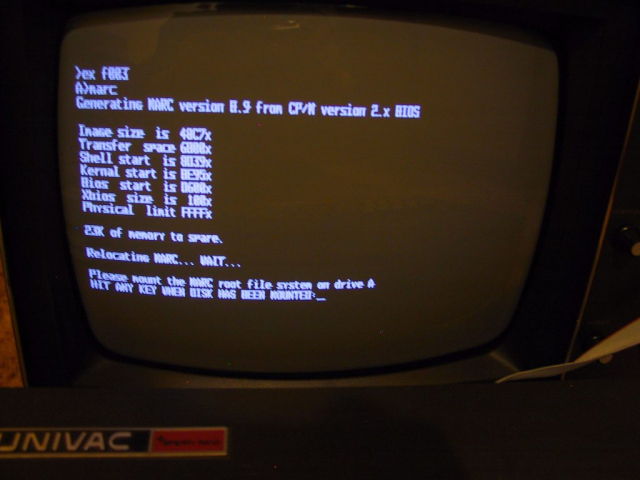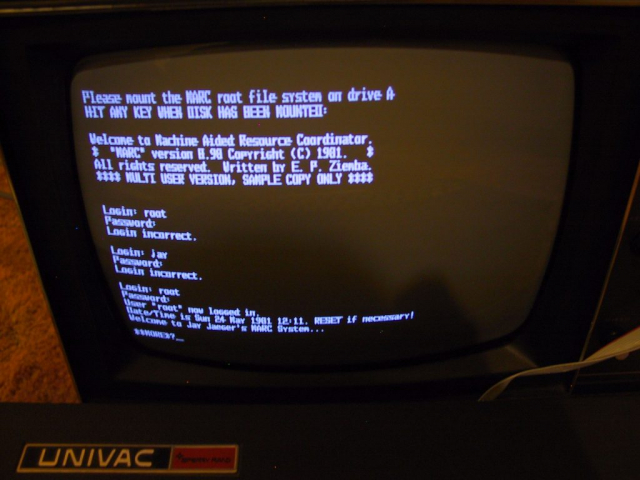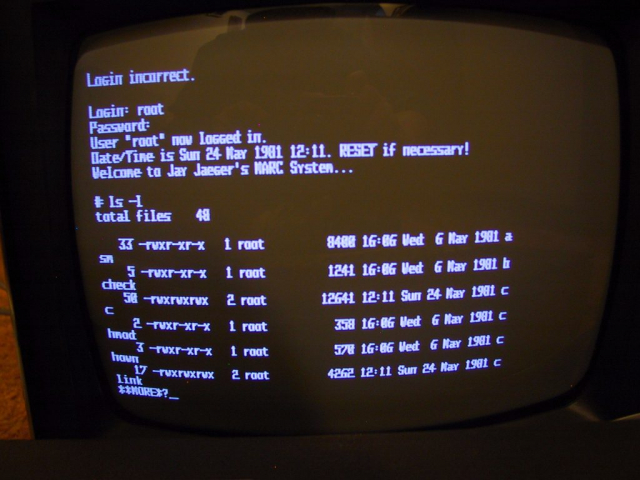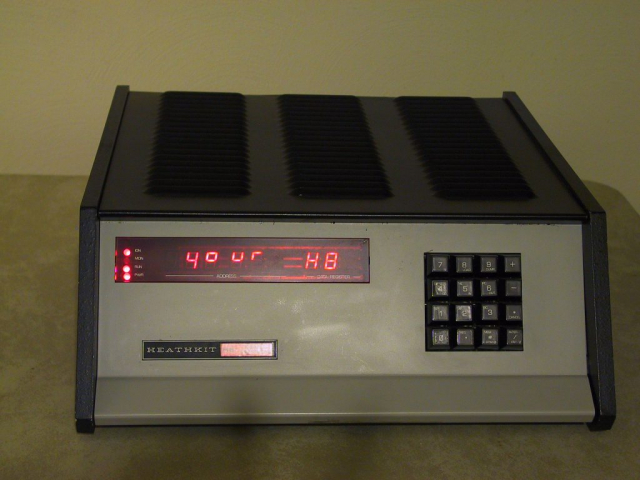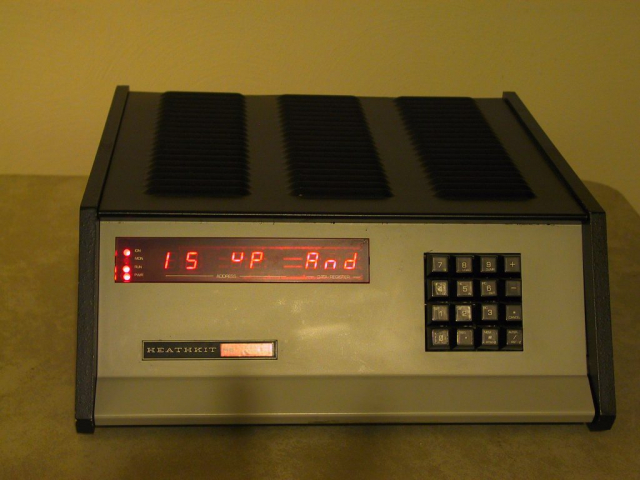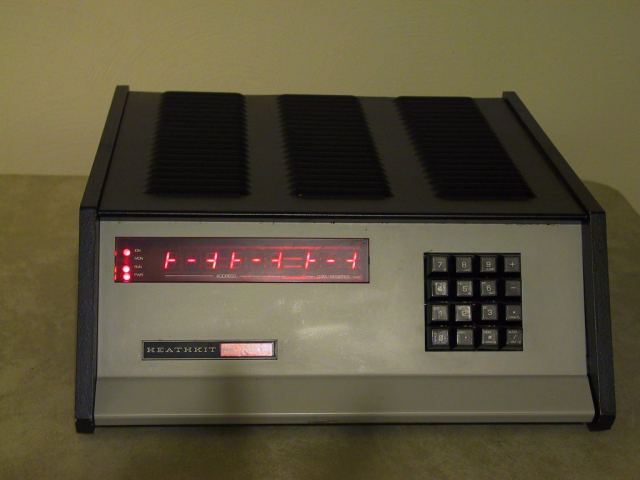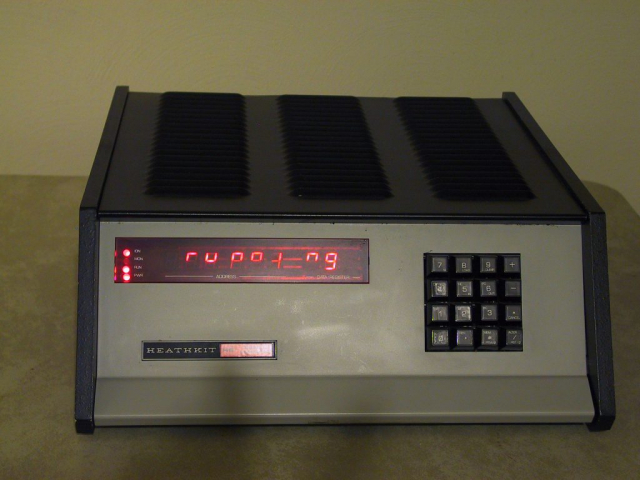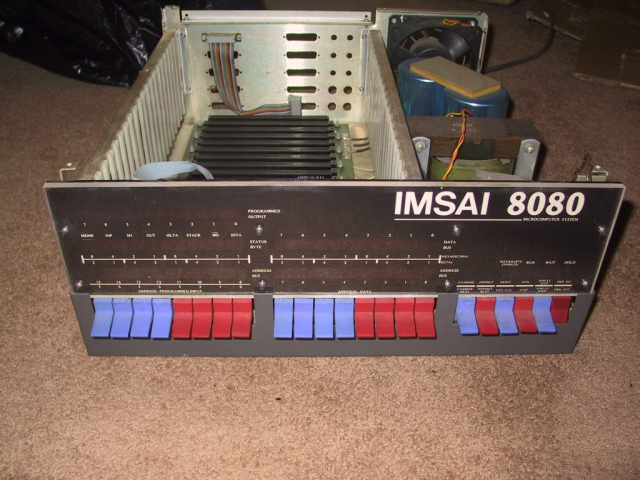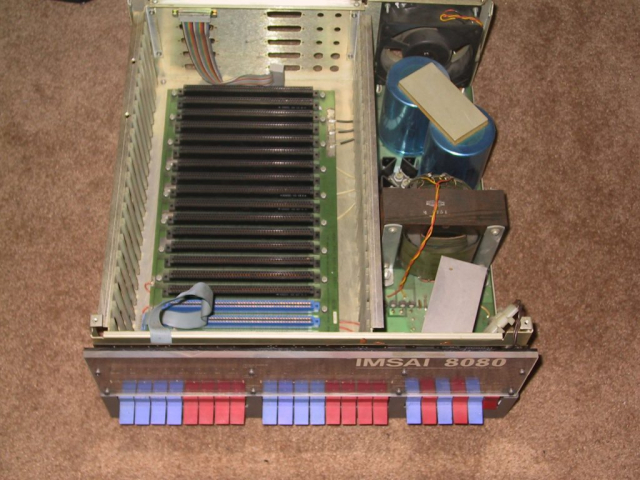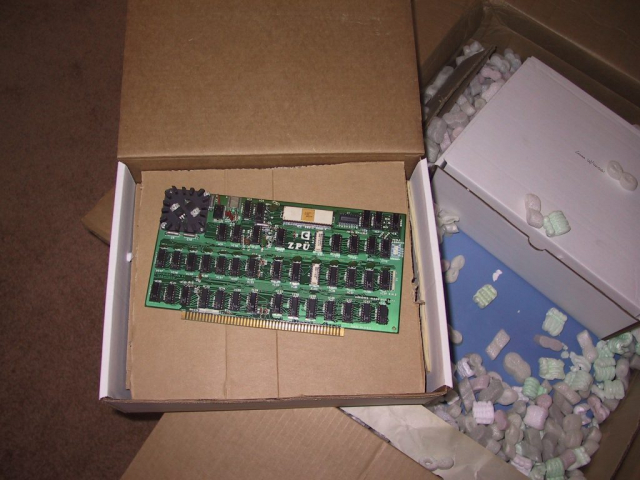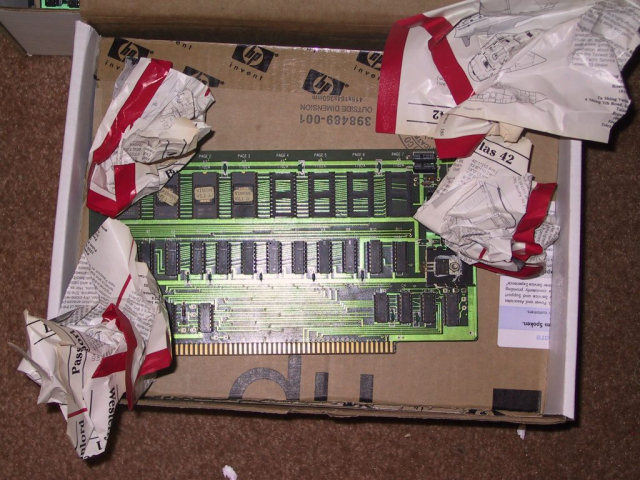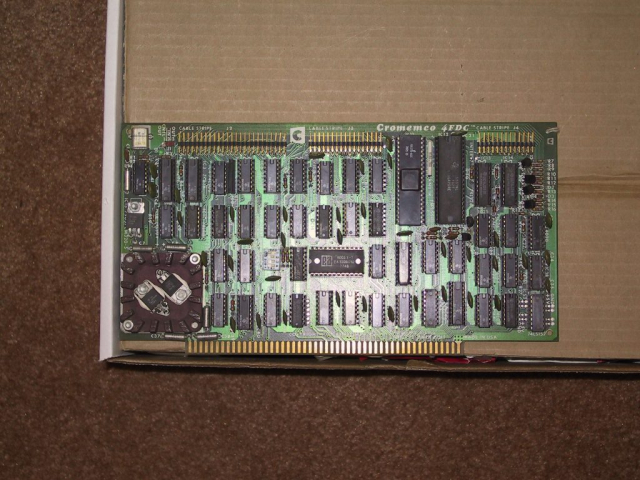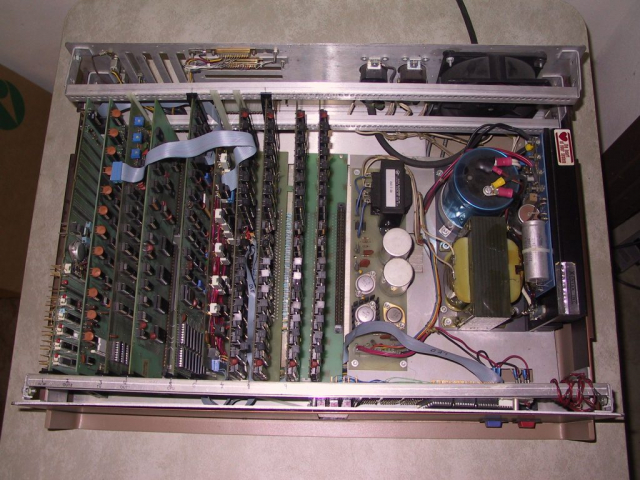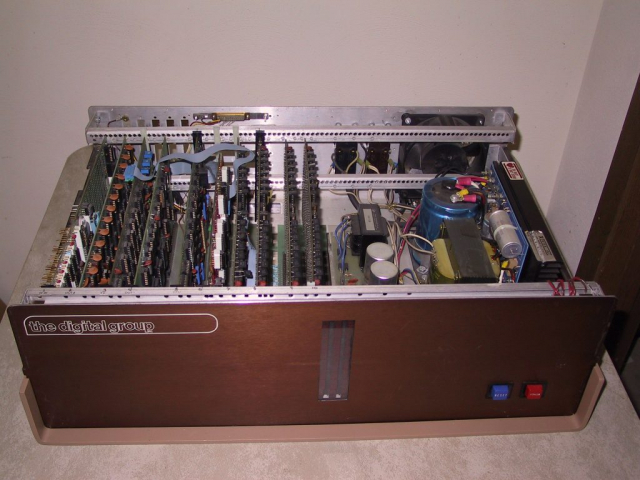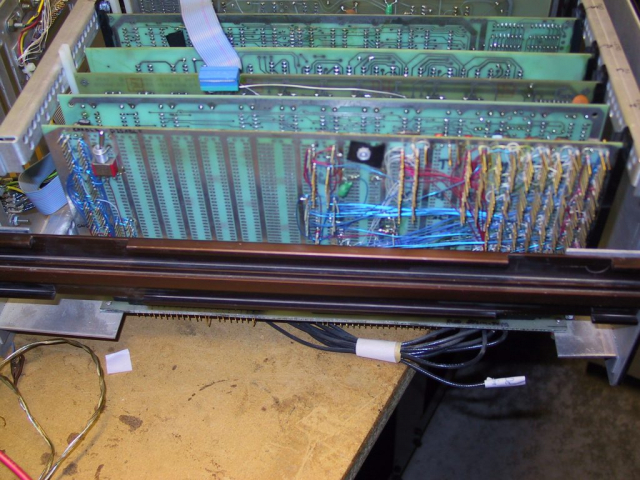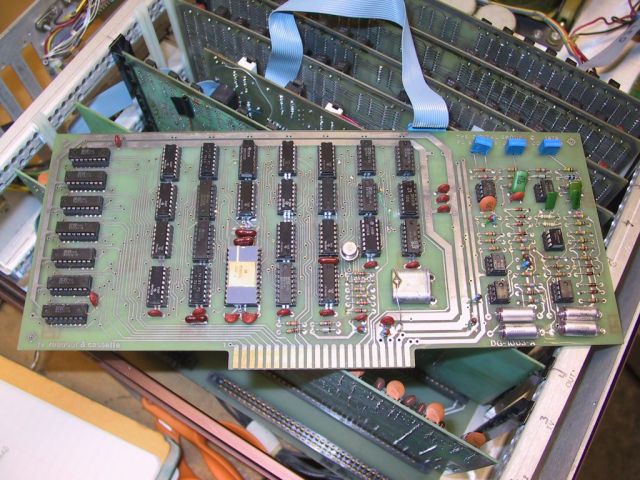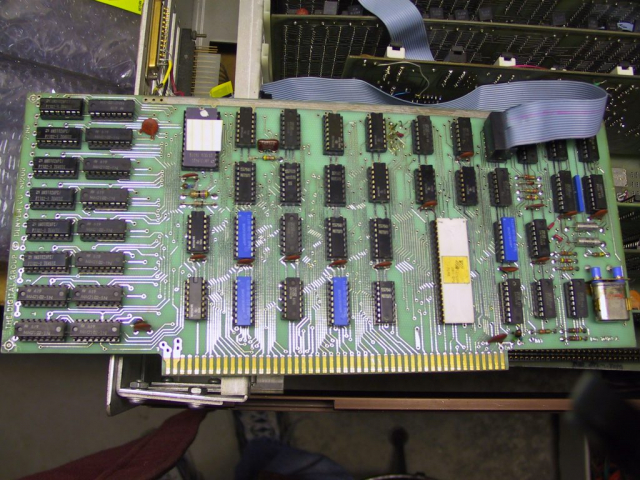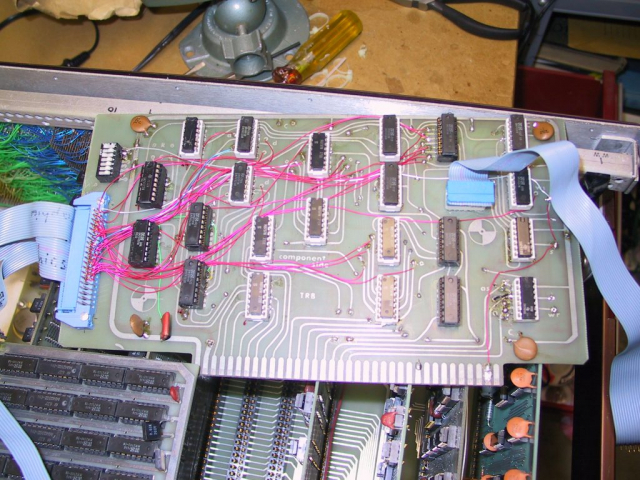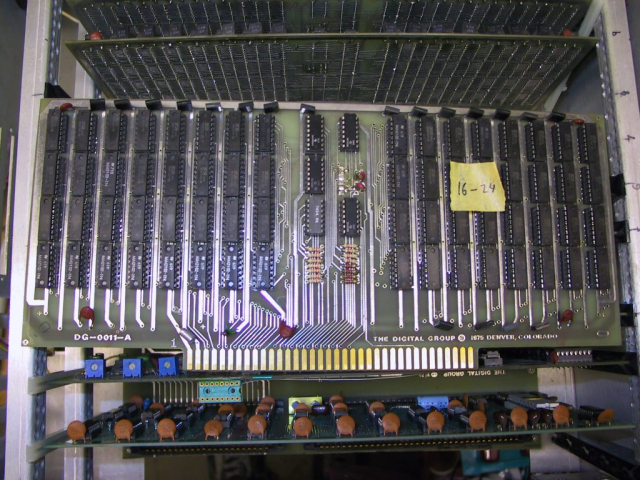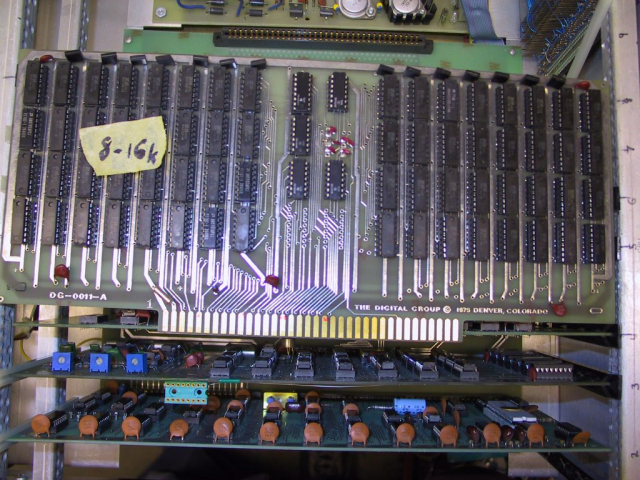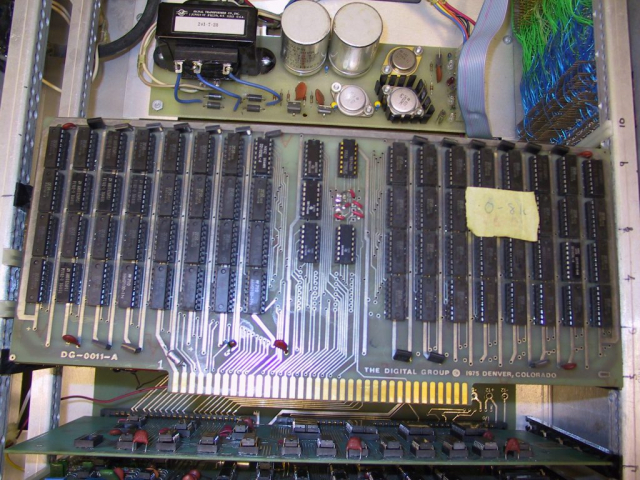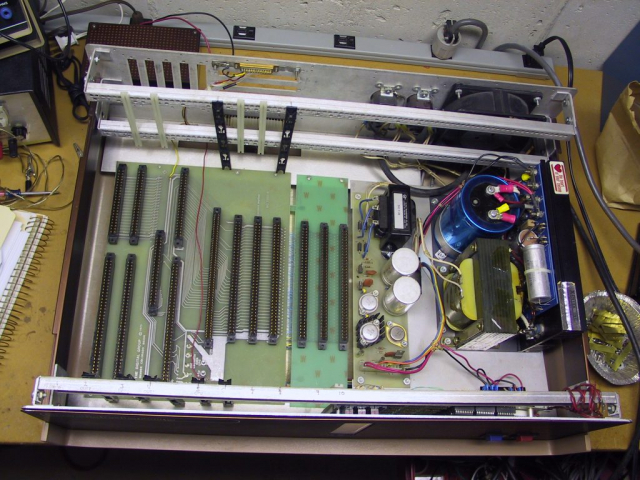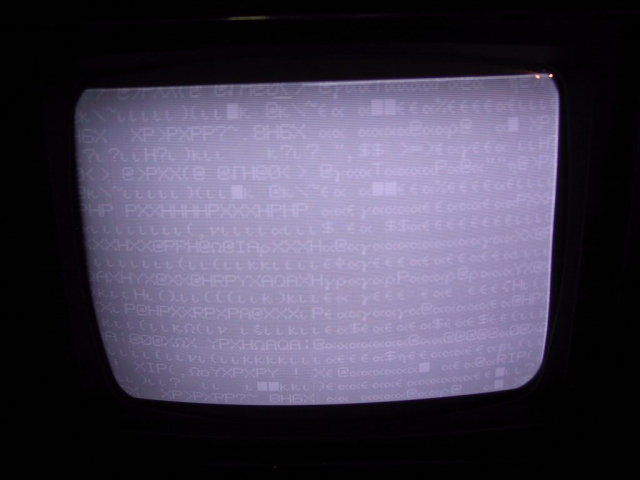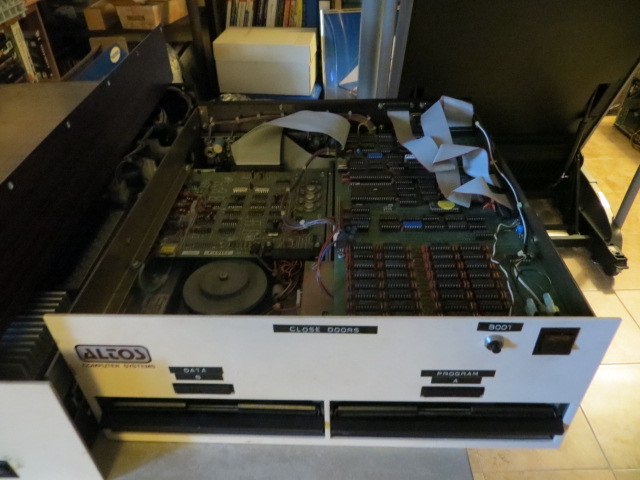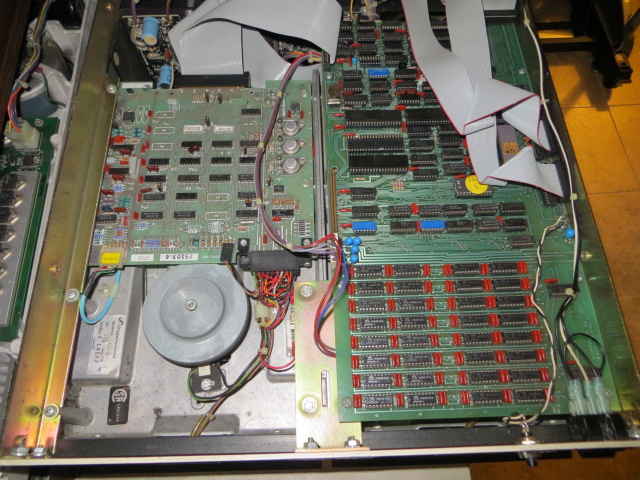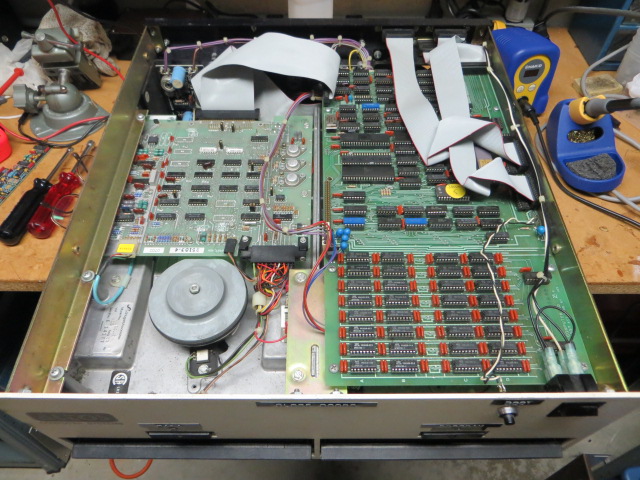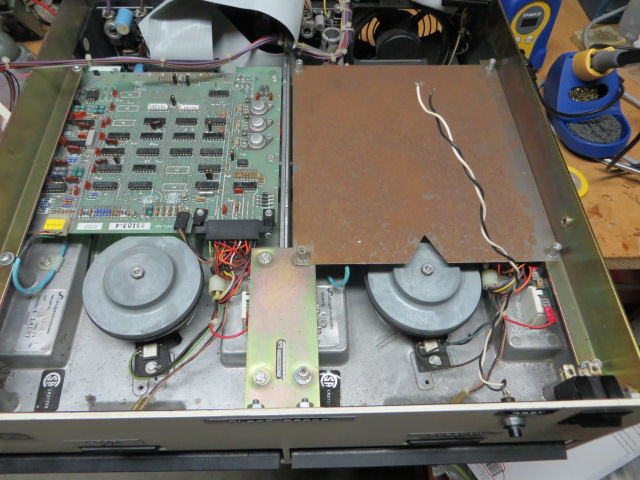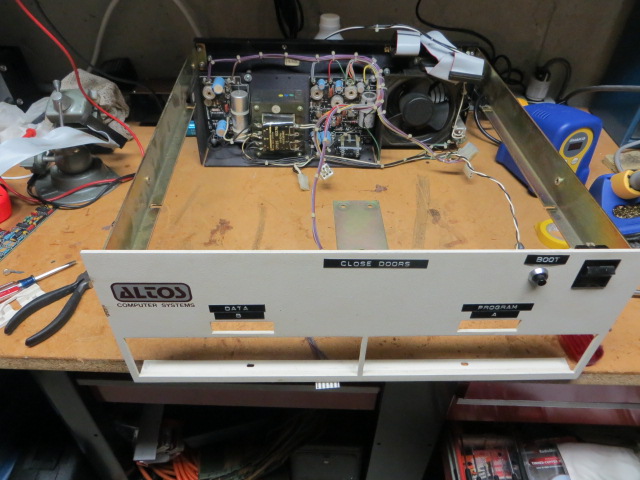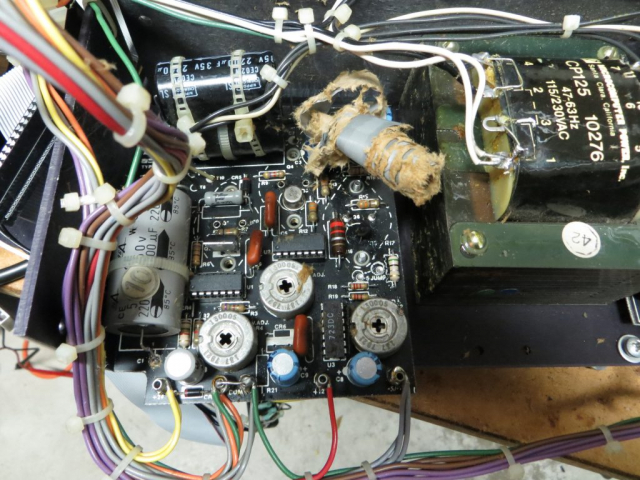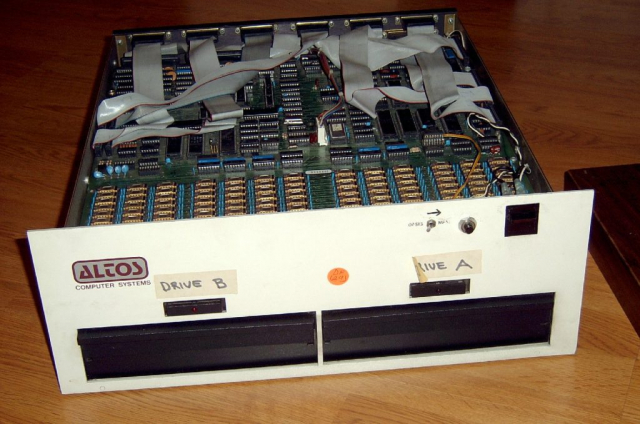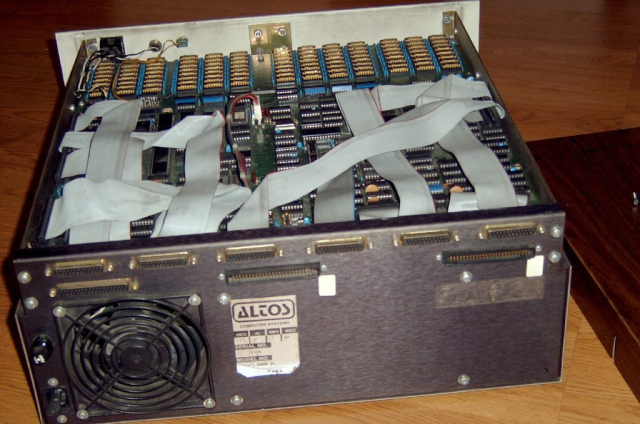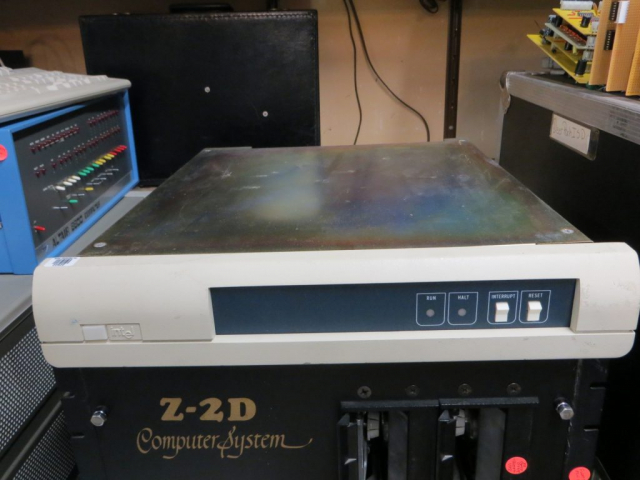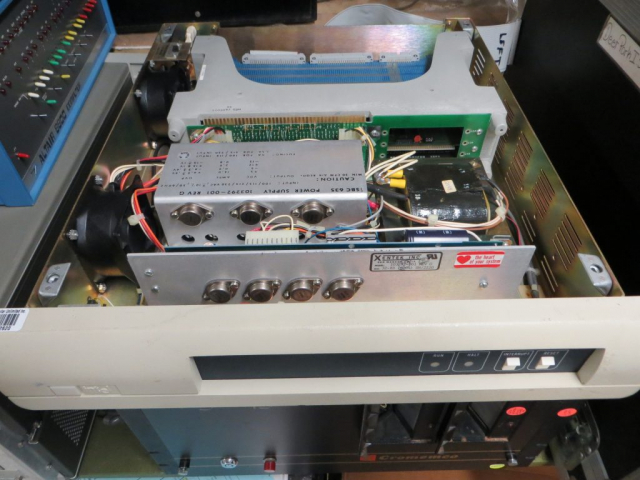The collection has quite a few machines based on the Intel 8008 (not counting machines with an embedded 8008, such as the PDP-11/34 console), Intel 8080 and Zilog Z80.
(Not shown is an Exidy Sorcerer Z80 system in the collection).
Mark 8
The Mark 8 is an 8008 based computer that was designed and published in Radio Electronics magazine. Back in the day, I did not have the time or money to build one, but I did order the plans. Then, in 2013, I designed PCB’s from the schematics using KiCAD and laid them out as close to the originals as I could readily manage. First, to prove the schematic was correct, I put together this wire-wrapped version:
Then, having tested and proved the design, I had PCBs manufactured, and then assembled the final version of the project. I also set up some GALs so that if I needed to, I could replace a couple of the harder-to-obtain Signetics chips used in the design.
Altair 8800
My Altair is an “original”, purchased as a kit when they first came out, and then expanded over the years. Its 100 pin bus design evolved into the S100 bus and then, eventually, the IEEE-696 bus.
My Altair still has the original 8080 CPU, 6 EconoRAM II/IIa 4K static memory boards, a Problem Solver Systems 8K static memory board, an EconoRAM IV 16K static memory board and an EconoRAM III 8K dynamic memory board – for 56K contiguous memory, plus its original Altair 1K static RAM board used for scratch RAM by the ROM monitor at 0xFC00.
It has a TEI FDC2 floppy controller with ROMs at 0xF000 and 0xF400 and a Micropolis floppy controller whose ROM is at 0xF800.
It has a normal RS-232 MITS serial port and a second serial port (that used to be for the cassette interface) that uses TTL that was used to provide floppy and printer emulation for my Atari 800.
The original video card for this machine was a Processor Technology VDM, but that was later replaced by a TEI Video card (ROM at 0xE800- 0xEFFF). It also has a MIT parallel card that was used to connect to various printers over the life of the machine, including a Comprint 912 printer that printed on aluminized paper.
Finally, I have a home built (wire wrap) ROM card that holds the ROM monitor and some CP/M BIOS support, addressed at 0xE000-0xE7FF.
For software the machine at various times ran the Processor Technology CUTS system (and the ROM monitor I developed is very much derived from CUTS), Micropolis DOS, CP/M 1.4, CP/M 2.2 and the MARC (Machine Assisted Resource Coordinator) operating system developed by the late Ed Ziemba, which never reached market – I was fortunate to receive a copy from Ed to play with before his untimely passing.
Processor Technology Sol-20
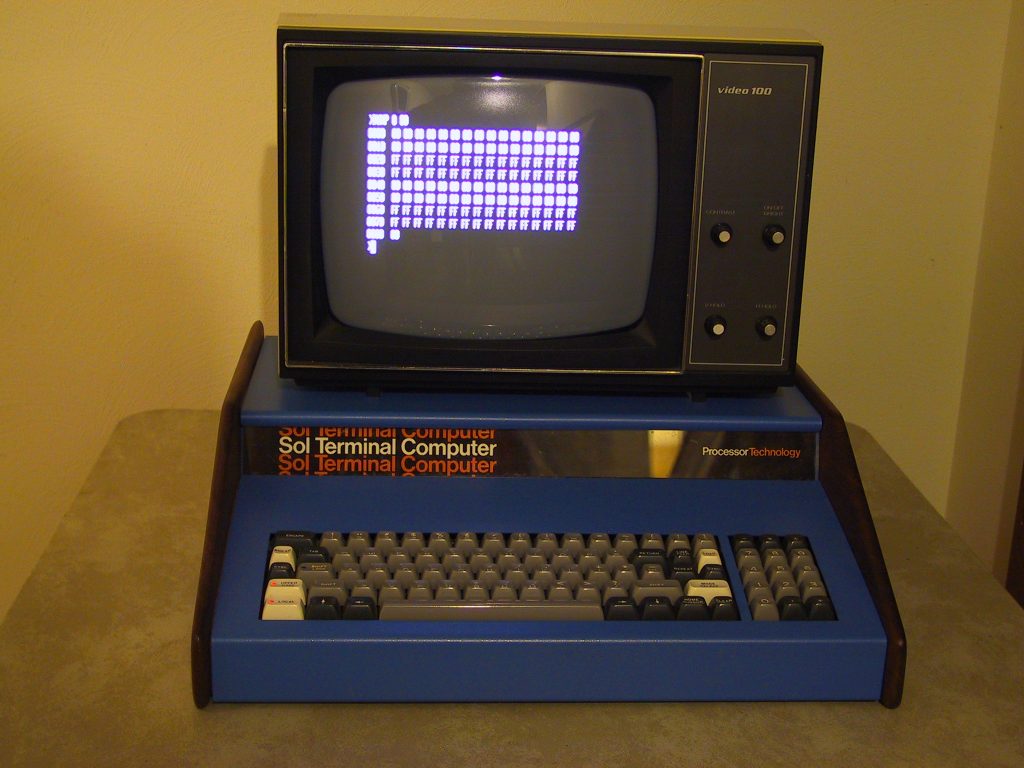
My Sol-20 is an 8K (if I recall correctly) model, with the usual 8080 CPU, S100 bus and CUTs personality module ROM.
This Sol-20 is a “prodigal machine”. In the 1970’s my friend and workmate John Kendall purchased the kit, and I was more than happy to agree to build and test it. Over the past several years I have offered to return it to him to sell – they are worth something, after all, but he has politely declined.
Heathkit H8
The H8 was an 8080 based computer available from Heathkit as a kit or assembled. Since I received mine already built, I am really not sure which flavor it is. It has a cute little montor ROM that runs the keyboard and display, as shown in this demo sequence. Instead of the S100 bus common in the day, the H8 has its own special bus, with male pins on the “father” board and female connectors on the CPU, memory and peripheral cards.
IMSAI 8080
After missing an opportunity to acquire an IMSAI 8080 S100 bus system back in the 1980’s from the UW Surplus SWAP program, I finally did purchase one off of eBay. I managed to get a decent price, and a number of S100 cards, including a Cromemco Z80 CPU card I am currently using in the unit with several of the cards documented at the S100computers.com site. I also have its original Intel 8080 based CPU card.
The Digital Group Z80
I acquired this Digital Group Z80 computer from the University of Wisconsin surplus program – it was sitting on a shelf looking lonely. It was heavily customized – the motherboard is rotated 180 degrees from its normal orientation. When I received it, it also had a special LED display and interface board. The display remains, but I have removed the custom interface board.
The configuration consists of:
- A Z80 CPU
- 24K of memory comprising 3 8K memory cards
- A 512 character video display
- A general purpose parallel I/O port board (4th from the left in the chassis photos)
- A floppy disk controller (2nd from the left in the chassis photos)
I also have the following additional boards which are not currently installed, most of which were acquired separately, and are not in the individual board photographs:
- A 64 Column TV Readout and Cassette Interface
- Two additional 8K memory boards. One of them is modified for some sort of graphics display (7th from the left in the chassis photos but no longer installed)
- Two 32K memory boards
- A special purpose board for driving the LED display. (6th from the left in the chassis photos, no longer installed)
- A custom wire-wrapped board that according to its connector is an A/D converter. (Leftmost board in the chassis photos, no longer installed)
I thought I had a PHI-Deck cassette controller for it, but if I do, it has gone into hiding.
Altos ACS 8000-2
The Altos ACS 8000-2 was another eBay purchase, in 2015, that went somewhat awry. It was advertised as an ACS 8000-7 (which includes a hard drive controller and a large Shugart hard drive.) The seller could not imagine how that happened (yeah, right). We did eventually come to terms for compensation. The last two photos here are a copy from that eBay listing. However, I received the ACS 8000-2 unit pictured in the top photos, along with the hard drive (not pictured here). A year or so later I managed to acquire an 8000-10 with an internal SA 1004 drive, but have not yet tested that or tried to hook it up to the larger SA 4008 that I received with the 8000-2.
The unit took a little bit of work. In the process of the usual removing and reforming capacitors, I managed to re-install one of the capacitors backwards – with spectacular results, as the one photo shows. Also managed at some point to short out part of it, requiring replacement of a power transistor or two and a linear regulator chip. This was just a few years ago (2015), but Radio Shack was still in business and actually had the parts I needed in stock.
Cromemco Z2D
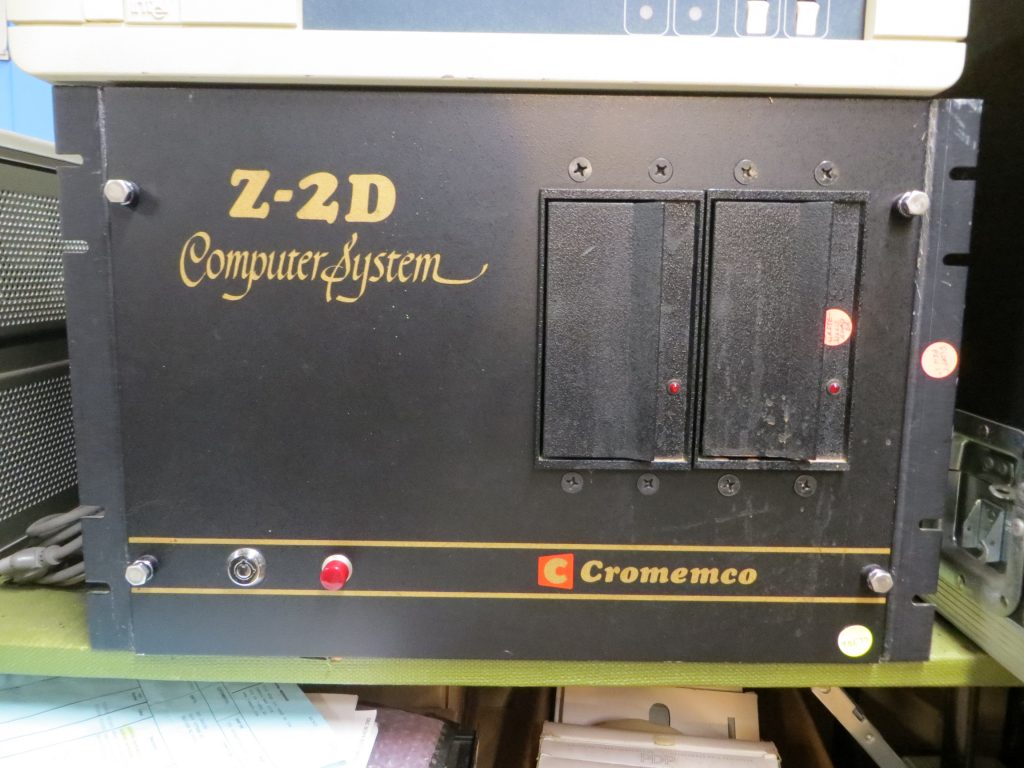
This is a boat-anchor of an S100 Bus system. The metal case is aluminum, but it has a huge power transformer. Inside are a Cromemco Z80 CPU card, a Cromemco 4FDC and 4 Cromemco 16K Dynamic RAM cards. The case and CPU card have a “hack” to bring the 2MHz / 4MHz switch on the CPU card out to the side of the case.
Intel iSBC
I purchased this Intel iSBC expecting to get only a case, MultiBus card cage and power supply. In fact, it came with an Intel iSBC 8080 card, a peripheral card and a MultBus prototyping card (with a specialized peripheral interface).
I also have an Intel intellec IV 8088 based machine in the collection.
Coleco ADAM
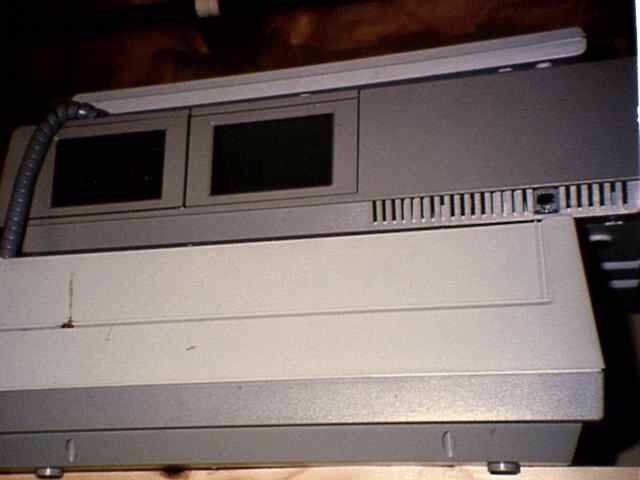
The ADAM was somewhat interesting in that, although it was a Z80 machine, it had an adapter that allowed it to play games originally designed for the Atari 2600 (using a 6507 CPU). . The machine you see here was donated by my (now late) brother Jim Jaeger. (Thanks to David Anderson for pointing out the fact that the system unit is in fact based on a Z80).

